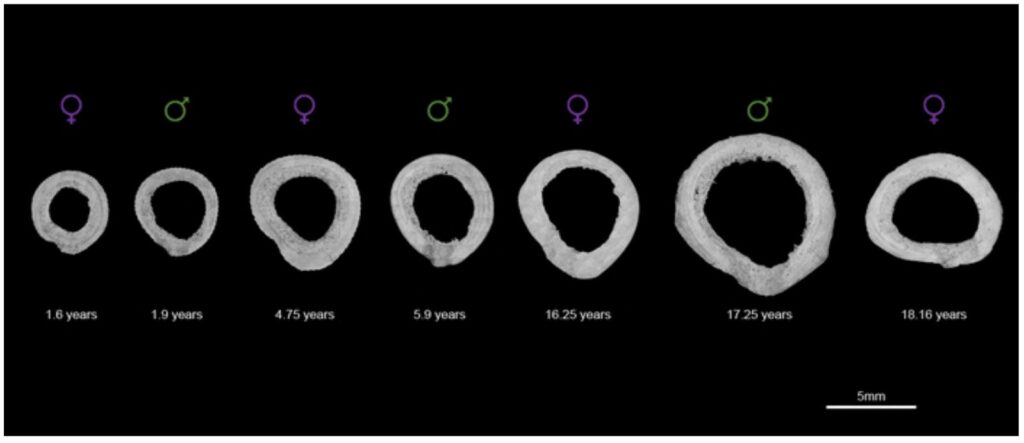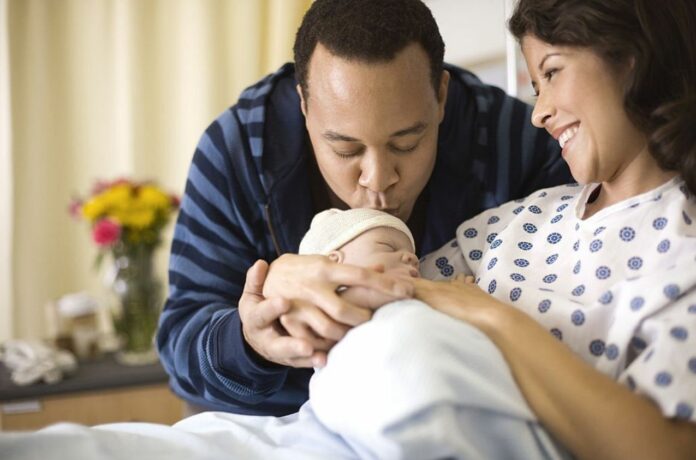“Skeleton is not a static organ, but a dynamic one that changes with life events,” and can be permanent after giving birth, shows a new study published today.
A team of anthropologists discovered that reproduction permanently affects the bones of females in ways that were previously unknown. It was found by looking at primates, which shows how giving birth can permanently change the body.
The results of the study “provide additional evidence of the profound impact that reproduction has on the female organism, further demonstrating that the skeleton is not a static organ, but a dynamic one that changes with life events,” says lead author Paola Cerrito.
In particular, the researchers found that females who have given birth have lower levels of calcium, magnesium, and phosphorus. These changes are related to both giving birth and breastfeeding.
They do, however, issue a warning that while prior clinical research have demonstrated the importance of calcium and phosphorus for healthy bones, the new findings do not address the implications for either primates or humans in terms of general health. They assert that the work instead highlights the dynamic character of our bones.
“A bone is not a static and dead portion of the skeleton,” adds study author NYU anthropologist Shara Bailey, adding “it continuously adjusts and responds to physiological processes.”
Timothy Bromage, a professor at NYU College of Dentistry, Bin Hu, an adjunct professor there, Justin Goldstein, a PhD student at Texas State University, and Rachel Kalisher, a doctoral student at Brown University, are the other authors of the study, which is published in the journal PLOS ONE.

It has long been known that menopause can affect a woman’s bones. Less clear is how life-cycle events, like reproduction, can change the way bones are made. In order to address this, the researchers looked at primary lamellar bones, which make up the majority of the bones in an adult skeleton. This element of the skeleton is an appropriate body part to analyze since it varies over time and provides biological markers of these changes, allowing scientists to track adjustments over the course of a lifetime.
In the PLOS ONE study, researchers looked at the growth rate of lamellar bone in the femora, or thigh bones, of both male and female primates who had lived at the Sabana Seca Field Station in Puerto Rico and died of natural causes. Veterinarians at the field station had been keeping track of these primates’ health and reproductive history and writing it down. This gave researchers a very accurate way to link changes in bone composition to life events.
To determine variations in calcium, phosphorus, oxygen, magnesium, and sodium contents in the monkeys’ bones, Cerrito and her colleagues employed energy-dispersive X-ray analysis and electron microscopy, two techniques frequently used to determine the chemical composition of tissue samples.
Their findings indicated that several of these components were present in females who gave birth at different concentrations from males and females who did not give birth. Specifically, bone produced during reproductive events included less calcium and phosphorus in females who gave birth. Additionally, the magnesium concentration significantly decreased while these primates were nursing their young.
“Our research shows that even before the cessation of fertility the skeleton responds dynamically to changes in reproductive status,” adds Cerrito.
“Moreover, these findings reaffirm,” according to the author, “the significant impact giving birth has on a female organism—quite simply, evidence of reproduction is ‘written in the bones’ for life.”
Source:10.1371/journal.pone.0276866
Image Credit: Getty
You were reading: Giving Birth Changes The Body In Ways Not Known Before – New Evidence
